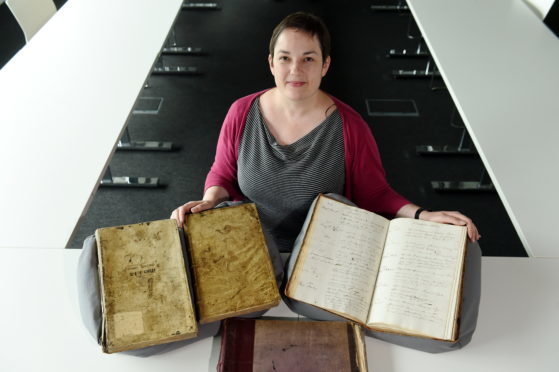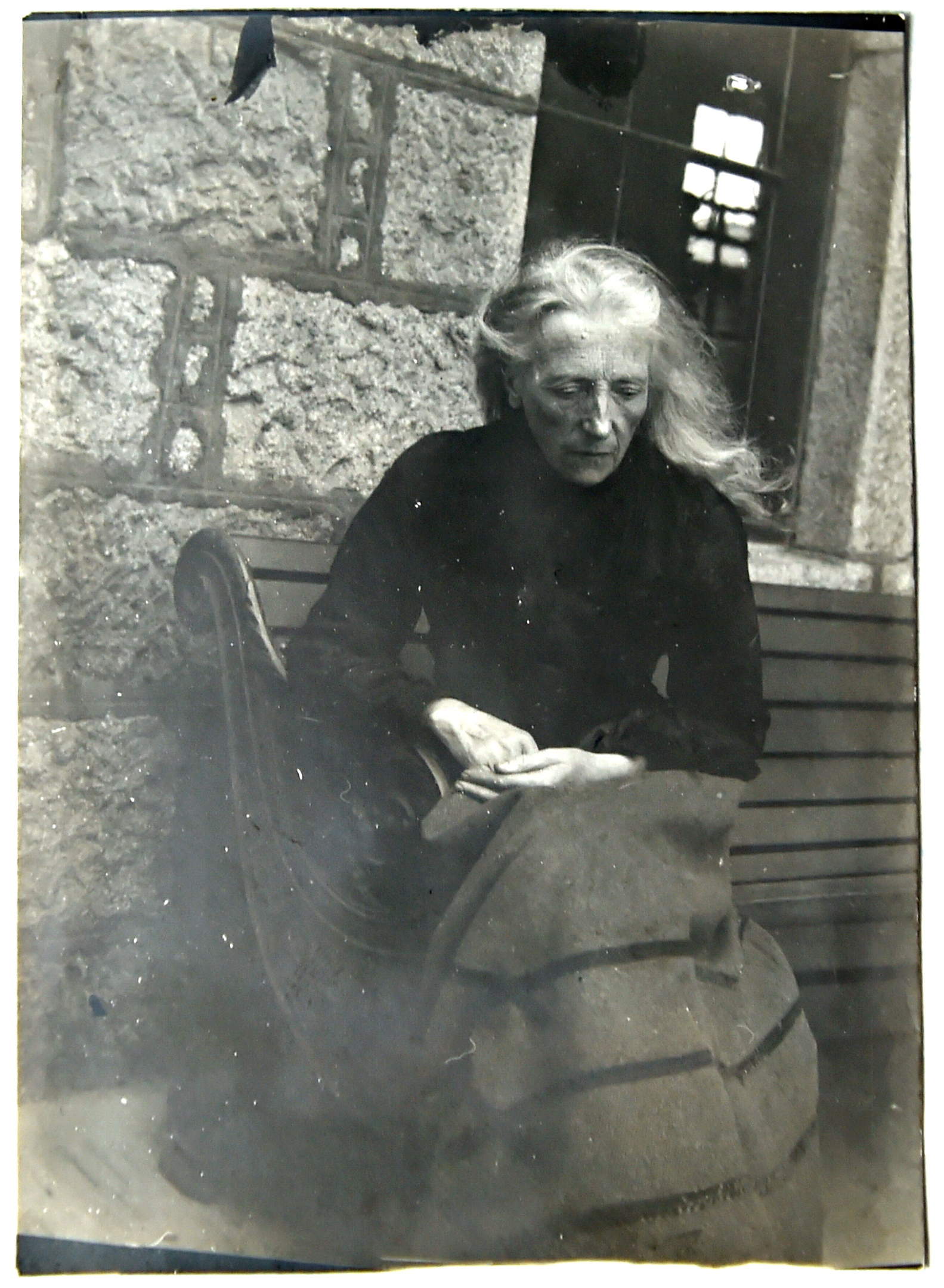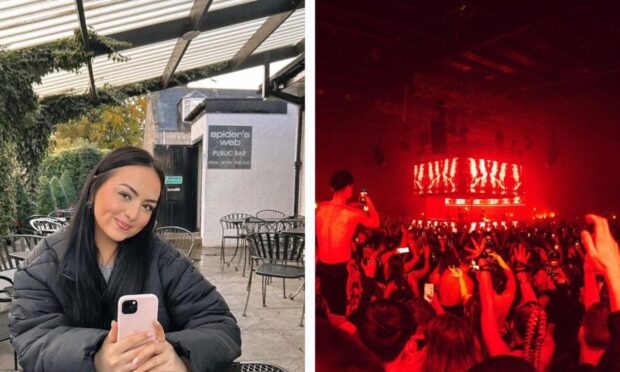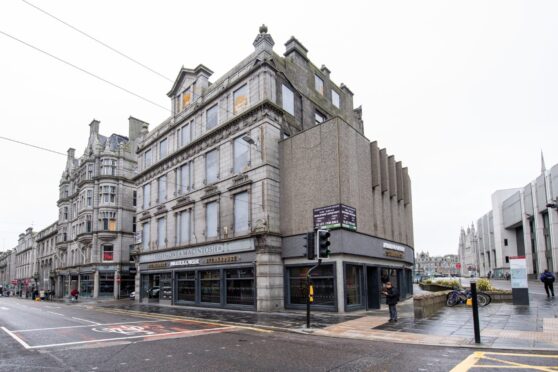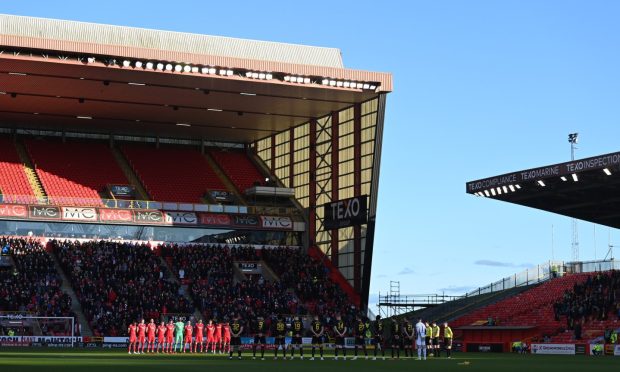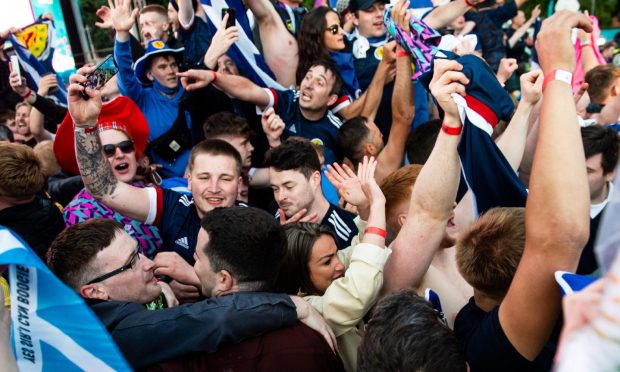A haunting image of a woman is one of only four surviving pictures that offering an insight into Aberdeen’s former home for the mentally ill.
The photograph of Jane Longmore, along with those of three other female patients, was taken in 1904 at Aberdeen Lunatic Asylum.
Jane Longmore, of Keith in Moray, was admitted to the asylum – now Cornhill Hospital – aged 63-years-old because she was “incoherent,” had a “defective memory” and suffered “delusions of suspicion.”
She died in the Aberdeen Lunatic Asylum in 1919.
The remaining three photographs were taken by a Doctor Pringle and cannot be published at present as the patients in his pictures did not die before 1942 and adult patient records are kept closed until 75 years after death.
Nonetheless, all the photographs, including one picture of a woman going through an ‘attack of mania’, give an insight into life inside Aberdeen Lunatic Asylum.
They are currently free to view at the NHS Grampian Archives in the Sir Duncan Rice library on Belford Road where efforts are being made to learn more about the asylum’s history.
Fiona Musk, NHS Grampian Archivist since 2015, said it was unclear why so few images had survived – though detailed written records tell far more.
Ms Musk said: “The photographs only tell us a little, but the supporting records tell us a lot more about what life was like in an asylum.
“And it was better than we think.
“There are of course stories of people being restrained or left in solitary. That certainly did happen but wasn’t systematic of life in the asylum.
“I’m not going to paint an overly pretty picture, but the benefits of patients keeping active and working was important to the asylum’s staff. The doctors genuinely wanted people to get better.”
Ms Musk is still researching the reason behind the lack of pictures that accompany 800 case notes, when other asylums across Britain routinely kept far more.
Stirling District Asylum – much smaller in size to that in Aberdeen – holds 35 pictures of patients who stayed there between 1890 and 1910. They are now housed in Stirling University.
And in England more than 700 photographs with attached case notes remain from Bristol Lunatic Asylum.
Miss Musk added: “It was common in other asylums that photographs were taken of patients, but that doesn’t seem to have been the case in Aberdeen, for whatever reason.
“We don’t know yet if photographs were lost or never routinely kept. Only four photos survived, all taken by Doctor Pringle.
“His name is not recorded in any asylum records. He did graduate from Aberdeen University in 1904 so the photos were perhaps taken as part of a university assignment.”
Rosie Al-Mulla, Archivist at Stirling University, said: “I find it really surprising how few have survived for Aberdeen Lunatic Asylum.
“I would hazard that it is due to the way they stored the photographs.
“Ours are pasted into the book and so could not be detached easily.”
The photos can be viewed at the Sir Duncan Rice Library on Mondays from 10am-12.30pm and from 1.30-4.30pm and on Tuesdays from 9.30am to 12.30pm and from 1.30-4.30pm.
The Aberdeen Asylum – also known as the Aberdeen Royal Lunatic Asylum and the Aberdeen Royal Mental Hospital – opened in November 1800 with just twelve cells.
- In its first 18 months less than 30 patients were admitted to the facility.
- Their care was either paid for by the patient’s family or by the state if they were classed as a ‘pauper patient’.
- Internal alterations were soon made to provide additional cells and in 1809 further renovations were carried out to allow for the complete segregation of male and female patients.
- Just a few years later an additional three acres were purchased and a new building, capable of holding a further 150 patients, was added.
- By 1900 the average daily number of patients in the hospital had risen to 867.
- The term `lunatic’ was dropped around the beginning of the 20th century and by the 1920s ‘mental hospital’ was used in preference to asylum.
- However, the change in name was not formally effected until 1933 when the Aberdeen Lunatic Asylum officially became Aberdeen Royal Mental Hospital.
- The hospital became part of the new National Health Service in 1948 and was administered by the Aberdeen Mental Hospitals Board of Management, later the Royal Cornhill and Associated Hospitals Board of Management.
- A regional psychiatric outpatient centre, the Ross Clinic, opened in 1959 and in 1964 the hospital changed its name again, becoming Royal Cornhill Hospital.
